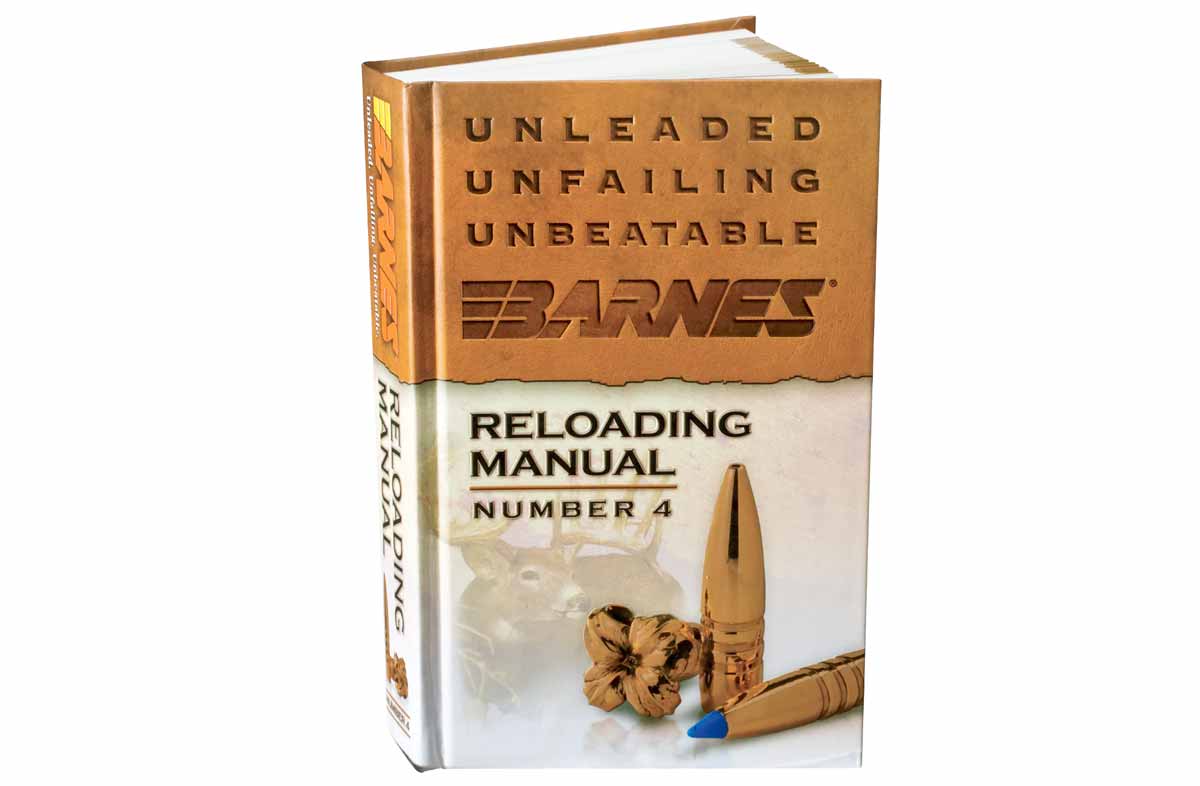Released in 2008, the Barnes Reloading Manual No. 4 hit the market at just the right time. A lot of new shooters were exploring the reloading hobby and the first great ammunition shortage of the 21st century was only months away.
While this book is not out of print, it is still available in the secondary market. Before you pick one up, make sure you know what it covers – and what it does not. There are some excellent alternatives.
In February of 2008, Jessica Brooks of Barnes Bullets Inc. announced the introduction of the book on Tom Gresham’s Gun Talk radio program. The manual shipped in April of that year.
A lot of people were interested to see the loading data developed for the company’s newer bullet lines like the TSX and TAC-TX. These bullets were significant additions to the company’s components lines and people were eager to have some factory researched recipes to use as a base for working up their own loads.
When new, the book had a suggested retail price of $49.99.
New Book & New Loads
The interesting thing about reloading manuals is that they are both timeless and constantly being updated.
Information in the books tend to be good forever – assuming you can still find the components listed in the recipes.
However, reloading manuals get regular updates as new cartridges are introduced, updated powder formulations replace old stocks and bullet designs change.
The Barnes Reloading Manual No. 4 was a perfect example. Classic loads for the .308, .270 Win, and 7mm Rem Mag got plenty of ink with updates to include new bullet options.
Newer cartridges were also added to the manual. For example, all of those WSM and WSSM cartridges that Winchester rolled out were included in this edition.
Disappointment?
The new reloading manual proved to be an amazing reference – for some shootes. Other people were disappointed.
I suspect that the people who were most disappointed were handgun shooters. Barnes offers a number of products for handgun cartridges, but when this book came out, the company’s offerings were fewer. With relatively few handgun bullets at the time the book was written, why would the company invest a lot of effort into those sections?
Should You Get One?
Even though the book is now out of print, should you pick one up?
If you are doing any kind of rifle handloading, I strongly suggest you pick this up and give it a place on your bench. If you are loading any of Barnes’ own bullets, it is a must-have.
If you are mainly loading handgun cartridges, you can probably skip this one and not worry about it.
If you already have a loading manual, I highly suggest you get at least a second manual to double-check the loads. I have several different manuals myself, and any time I start working up a new load, I check at least two of them. My thought is that a typo can be made in any book, including a loading manual.
If I see that two different manuals give a similar powder charge for a given bullet weight, then I have a pretty good feeling that there is not a misprint that might damage my gun.
Alternatives
There are plenty of solid load manuals out there. One of my favorites is the Hornady Handbook of Cartridge Reloading. I have several editions of this book – which is now in its 11th Edition!

The Hornady manual is very thorough with load data on hundreds of handgun and rifle cartridges. I strongly encourage people to pick this one up.
Another great manual is Modern Reloading by Richard Lee. Now in its second edition, this is an excellent book for new reloaders. Lee does an exceptional job of explaining basic concepts and holding your hand as you learn the art. Advanced shooters can get a lot out of this as well.

Fair warning – Modern Reloading covers things with a bias toward Lee Precision reloading gear. That’s not really strange as the other load manuals are manufactured by bullet companies that get broad – if not exclusive – coverage in those books.
The Modern Reloading book does not cover as many cartridges as the Hornady book does (178 vs 200+,) but it is worth every penny.
Last update: May 30, 2021
